The bathroom sink is one of the most commonly used features in a home. It’s also one of the most easily clogged. The overflow hole is often the first place to become clogged. This can be a real problem, especially if you don’t know how to clean a bathroom sink overflow hole it properly.
Here are some tips on how to clean sink overflow holes in your bathroom. Hopefully, all the following tips can keep your bathroom smelling fresh and clean, so take a spare minute to read!
.
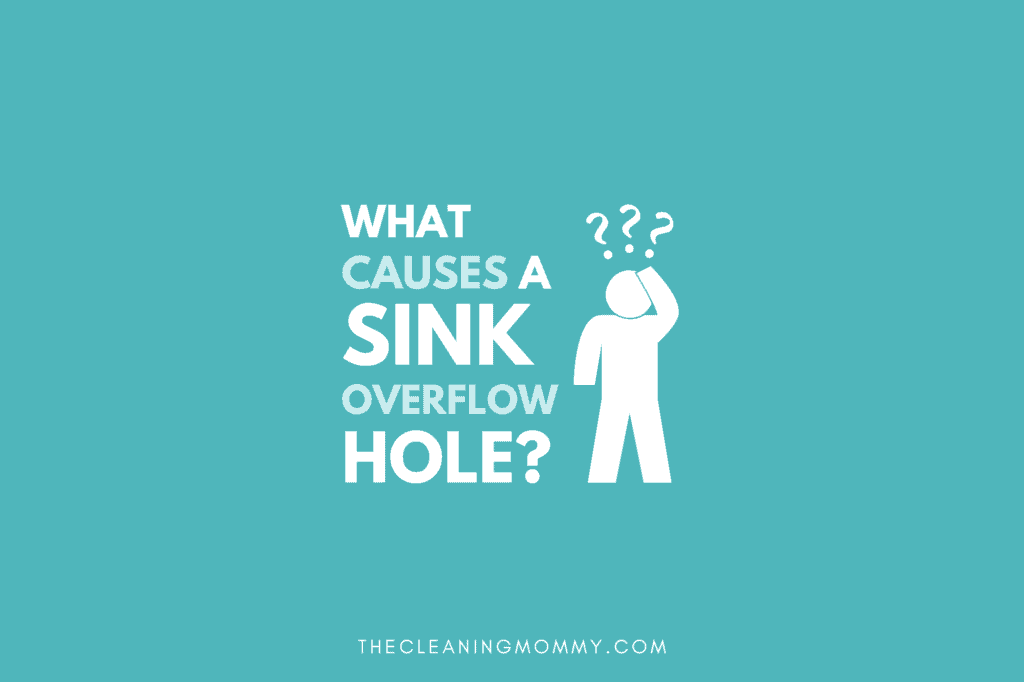
How To Clean Overflow Drain in Sink
A bathroom sink overflow hole can grow mold and mildew as a result of its humid environment and constant exposure to moisture. This can result in a nasty smell emanating from the bathroom. Foul odors may also emanate from sinks if organic bacteria matter is present. This is due to food waste, oils, or hygiene products that have been left in the sink for an extended period of time.
The overflow hole should be cleaned routinely in the same manner as any other bathroom fixture in order to prevent odors from emanating from the sink. To remove mold colonies and loosen the grime buildup around the overflow, scrub any area that can be reached. The overflow hole can be cleaned with a few standard household items.
The following items are required:
- Zip Ties
- A rubber hose
- Distilled White Vinegar (do not use Apple Cider because this can cause staining)
- Baking soda
- Warm or preferably boiling water (you can get a boiling water stick for this)
- A silicone funnel or a metal funnel that is rated for high temperatures.
- A flexible drain brush or pipe tube brush
Use Zip Ties
Using long zip ties allows you to easily push away any clogging materials from the sink overflow hole because they are both flexible and firm.
It is a simple process. Your zip tie should be inserted as deeply as possible into the sink overflow hole.
In order to dislodge all the residue, wiggle the zip tie up and down in circular motions.
In order to remove any stubborn and sticky residue left over from the process, pour some hot water through the drain.
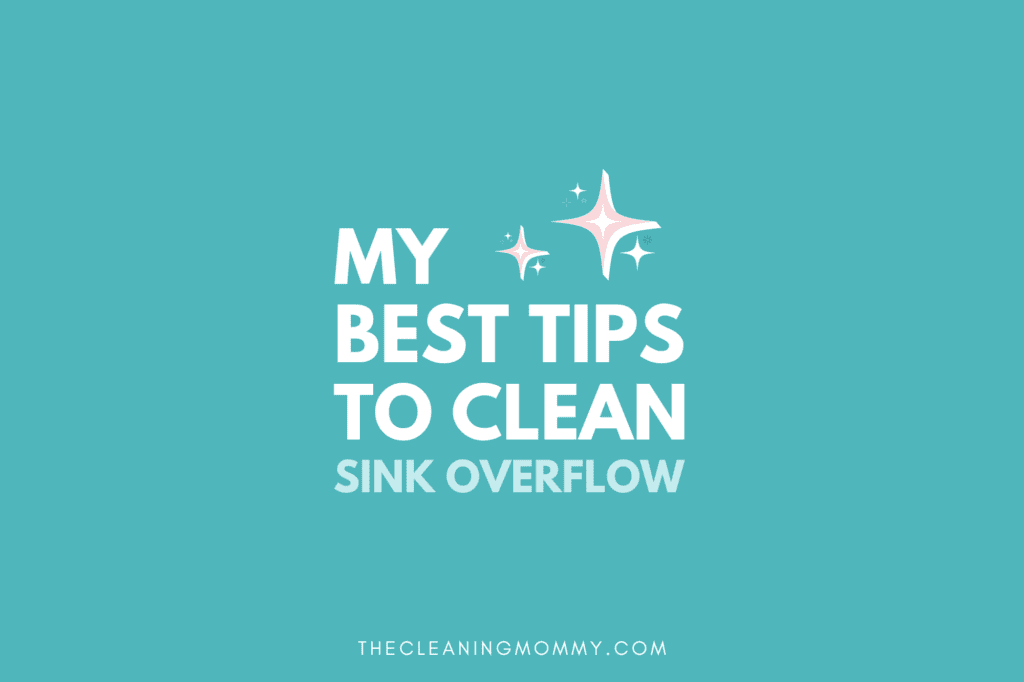
Using A Rubber Hose
In order to ensure that the sink overflow hole is sparkling clean and rid of odor, follow up on the first procedure with this one.
Open the faucet and allow it to run for several minutes after plugging the drain with a rubber plug.
You should place your rubber hose into the channel hole once the sink is overflowing and water is running down it.
Take large gulps of air and blow into the channel. Ensure that the air you blow flows smoothly through the pipe by continuing to blow. There is now no dirt or residue in the clean sink overflow, which is a sign that it has been freed of clogs.
Using a Overflow Cleaning Brush
- Fill the hole with 1 cup of baking soda using the silicone or metal funnel. Pour 1 cup of white vinegar on top and allow it to fizz as the two ingredients react.
- Fizzing reactions contain acidic properties which enable dirt and grime to be lifted from surfaces more easily.
- Aside from cleaning your drainage system, this solution also deodorizes it to eliminate foul odors.
- Using a pipe tube brush (a pipe cleaner may be too thin) or other sink cleaning brush, scrub any parts of the sink that are reachable after allowing the two ingredients to sit for 15-20 minutes.
- Make a large pot of boiling water and slowly pour it in a steady stream. If your sink is not made of ceramic, stone, or porcelain, you should skip this step. The boiling water could cause your sink to warp and become damaged.
- Ensure that the sink overflow is completely deodorized by repeating the process as necessary to get as much gunk as you can out.
- Before funneling boiling water into the overflows of a plastic or resin sink, allow it to cool just until it is not boiling, but still hot water.
- If your sinks overflow has a cap, review the manufacturer’s instructions on how to remove the cap before beginning the cleaning process. You should also scrub the cap to ensure that it is completely clean.
- If mold growth has developed on the stopper, use the same cleaning solution to clean it off. Before replacing the cap on the overflow hole, it should be rinsed thoroughly and allowed to dry.
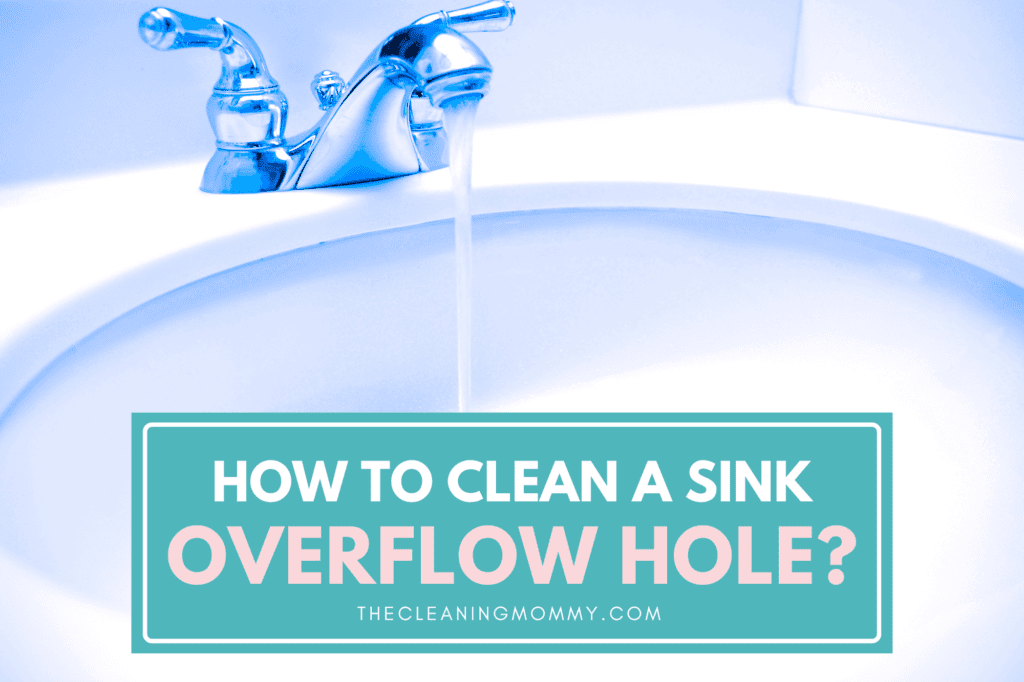
Using Enzyme Cleaners
Bad smells may develop in the sink drain as a result of bacteria growing there. You cannot remove the odor simply by cleaning with boiling water since it may not be effective in killing the bacteria.
In order to remove the source of the odor, enzyme cleaners are designed to eat bacteria and eliminate them. Many home improvement stores sell enzyme drain cleaners, and some will indicate whether they are safe for drains that flow into septic tanks. The powder form of some cleaners must be mixed with water before use. There are also some that are available in liquid form.
The enzyme mix should be poured down the overflows using a funnel. Let it sit overnight so that it can work on the bacteria. The next morning, carefully flush it with warm water to remove the bacteria.
Liquid Cleaners
Overflows are a necessary part of any bathroom sink, as they help to prevent water from spilling onto the floor in the event of a clog. However, these holes can also become clogged with dirt and debris over time.
When this happens, it can be tempting to reach for a liquid cleaner and give the holes a quick blast. However, this is not the best solution. The chemicals in the cleaner can damage the finish on the sink, and they may also come into contact with food that is prepared in the kitchen sink, leading to contamination.
Instead, it is best to clean overflows using a brush, the proper size pipe cleaner, or other gentle cleaning methods. This will remove any build-up without damaging the sink.
Vinegar and Baking Soda
Using this solution, you can deep clean your sink drain. Combining these two ingredients creates a foaming, cleaning, and deodorizing magic solution that removes dirt and grime without exposing the area to harsh chemicals.
A silicone funnel should be inserted into the hole, and one cup of bicarbonate sodium should be carefully poured into the funnel. Add one cup of white vinegar gradually to the baking soda. When you mix it, it foams up and flows down the drain. After 10 minutes, pour the boiling water in the hole to flush out the cleaner and sanitize it.
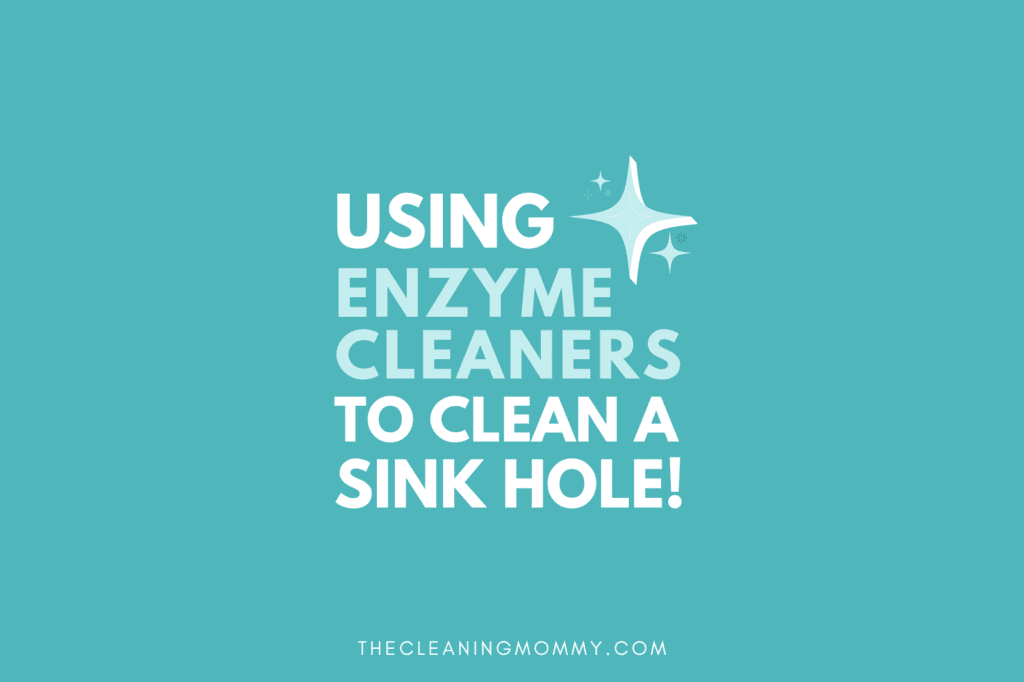
How to Unclog Overflow Hole in Sink
I’m pretty sure you know how significant it is to keep your bathroom sink drains clear. They can’t work otherwise. Maintaining cleanliness is also important. As a hot, damp environment, the bathroom is not the type of place where you want to discover that you are growing mildew in your sink.
Here’s what you need:
- You can use a pipe cleaner or sink brush (find the right size if it’s a small hole)
- Heat-resistant silicone funnels that don’t easily conduct heat because they can withstand boiling water temperatures
- Boiling water (two to three quarts)
- Use a pipe cleaner or sink-cleaning tool to clean the drain hole
- Scrape with your tool in and out several times to get all the gunk out.
- Get the water boiling.
- Put the funnel in the sink’s hole.
- Let the boiling water go through the funnel slowly to loosen and flush anything that’s left. (Be careful! Cleaning with boiling water can burn you, and can give you a nasty steam burn! You might want to call a buddy.)
- Keep repeating.
How To Clean a Bathroom Sink Overflow Hole if it Stinks
Your sink will smell awful if mildew builds up. You’ll probably never get to that point with your bathroom sink, but if it does, here’s what you need to do.
What you’ll need:
- One cup of baking soda
- One cup of distilled vinegar (white, not apple cider)
- Two quarts boiling water
- A heat-safe funnel
- Put the funnel in the hole.
- Down the funnel goes the baking soda.
- Pour the vinegar down the funnel slowly. You’ll get a little fizz.
- Allow the baking soda and vinegar to work for about 15 minutes.
- Make sure the sink is clean by flushing it with boiling water. Be careful not to get burned by the steam. Ask for help if you need it. You may even want to leave the water running from the faucet to ensure a clear flow.
- If the odor remains still, repeat.
- What is the Overflow Hole in Your Sink?
- The bathroom sink overflow hole prevents the accident of spilling water onto the floor when it fills up. Typically, it is placed a few inches lower than the sink’s maximum capacity. Moreover, the overflow drain hole in the bathroom sink introduces air into the sewer system, resulting in a suction that expedites water drainage from the sink.
- As the water drains slower than the flow of the faucet, the sink can quickly fill up and spill all over your bathroom if there is no overflow. Without a bathroom sink overflow drain system, your floors would also be contaminated with sewage backing up from clogged pipes.
- A homeowner can fill up the sink as needed by placing a cap or stopper over the overflow hole of some sinks. You may have a model that features an overflow drain cover if you are unable to locate the overflow drain behind these caps and stoppers.
- The Main Causes of an Overflow Hole in Bathroom Sink
- Due to its infrequent attention, the overflow hole is rarely cleaned properly. It is inevitable that dirt and mold will find their way into the overflow hole, eventually resulting in grime buildup. Overflow holes are often left undisturbed, resulting in debris adhering to their walls and sides and becoming dried and crusty as a result. Many types of bacteria can also be found in the overflow hole, some of which are harmful to human health.
- A dirty overflow hole can result from a variety of factors, including dust particles that find their way into the sink overflow, food and organic material that accidentally enter the overflow hole, and the oil found in shampoos and conditioners.
- Overflow holes are also prone to mold growth. As a result of the warm, humid, and dark environment in which the overflow hole exists, excess water, mold, and mildew colonies are likely to flourish. Due to these growths, the sink is home to a variety of organisms that are capable of causing allergies and making you ill when their spores are inhaled.
- In any case, the result of mold and mildew growing can cause gunk buildup, a stinky smell, and a clogged overflow hole. Unless you want a terrible smell in your bathroom, you must clean the sink overflow hole regularly.
- Keep reading to learn about enzyme cleaners, how to clean the overflow, and prevent bad smells and clogged drains.
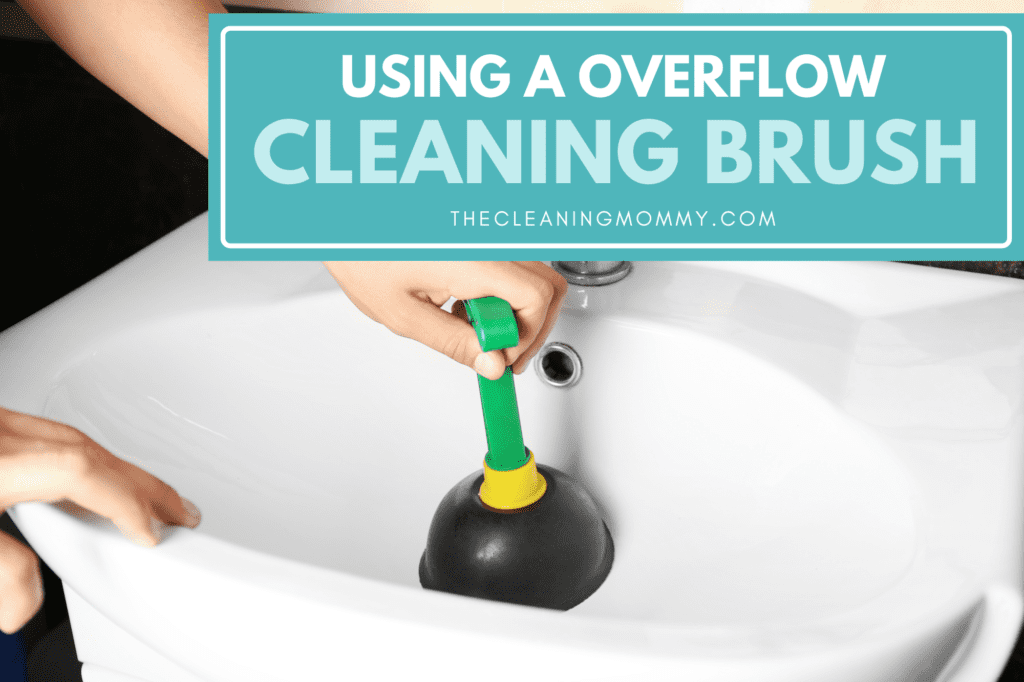
What is the Overflow Hole in Your Sink?
The bathroom sink overflow hole prevents the accident of spilling water onto the floor when it fills up. Typically, it is placed a few inches lower than the sink’s maximum capacity. Moreover, the overflow drain hole in the bathroom sink introduces air into the sewer system, resulting in a suction that expedites water drainage from the sink.
As the water drains slower than the flow of the faucet, the sink can quickly fill up and spill all over your bathroom if there is no overflow. Without a bathroom sink overflow drain system, your floors would also be contaminated with sewage backing up from clogged pipes.
A homeowner can fill up the sink as needed by placing a cap or stopper over the overflow hole of some sinks. You may have a model that features an overflow drain cover if you are unable to locate the overflow drain behind these caps and stoppers.
The Main Causes of an Overflow Hole in Bathroom Sink
Due to its infrequent attention, the overflow hole is rarely cleaned properly. It is inevitable that dirt and mold will find their way into the overflow hole, eventually resulting in grime buildup. Overflow holes are often left undisturbed, resulting in debris adhering to their walls and sides and becoming dried and crusty as a result. Many types of bacteria can also be found in the overflow hole, some of which are harmful to human health.
A dirty overflow hole can result from a variety of factors, including dust particles that find their way into the sink overflow, food and organic material that accidentally enter the overflow hole, and the oil found in shampoos and conditioners.
Overflow holes are also prone to mold growth. As a result of the warm, humid, and dark environment in which the overflow hole exists, excess water, mold, and mildew colonies are likely to flourish. Due to these growths, the sink is home to a variety of organisms that are capable of causing allergies and making you ill when their spores are inhaled.
In any case, the result of mold and mildew growing can cause gunk buildup, a stinky smell, and a clogged overflow hole. Unless you want a terrible smell in your bathroom, you must clean the sink overflow hole regularly.
Keep reading to learn about enzyme cleaners, how to clean the overflow, and prevent bad smells and clogged drains
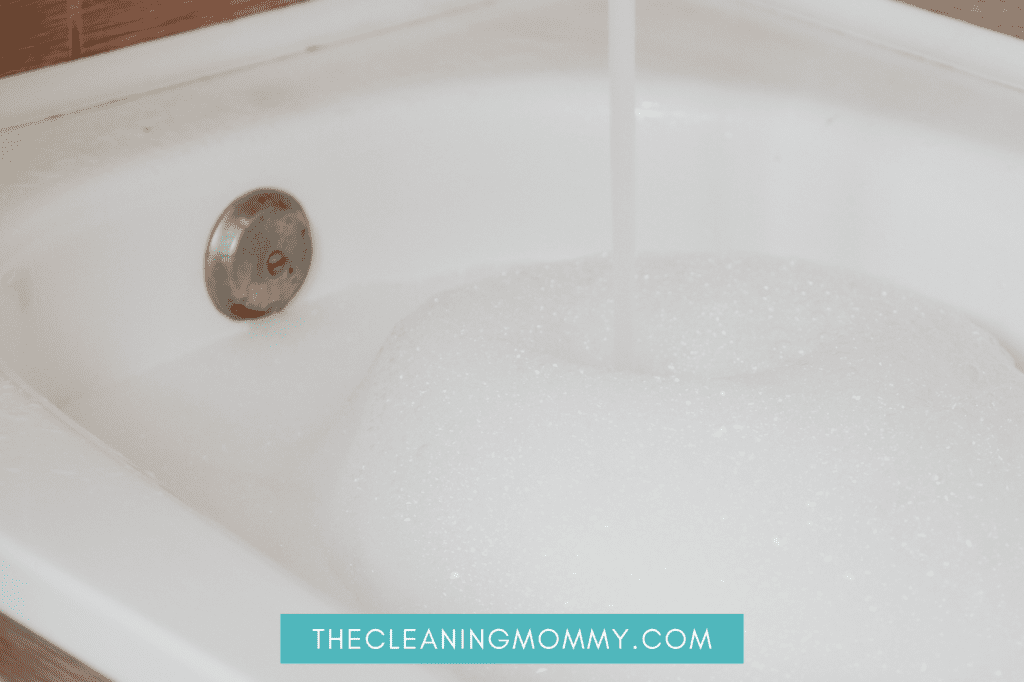
How to Clean Sink Overflow Conclusions
If you have recently noticed that your sinks are starting to emit an unpleasant odor, there are a few possible explanations. Here are more tips to keep in mind.
First, you may simply need to give them a good scrub to clean inside. Over time, all pipes can become clogged with soap scum, dirt, and other debris that can stick to the sides.
If this is the case, you can try using a cleaner or a plunger to clear the blockage. If your sinks are still smelling after you’ve exhausted all cleaning methods, you may have a plumbing issue. Unfortunately, in such cases as sewage backing up into your plumbing, it can be very difficult to get rid of the smell. In this case, it’s best to call a professional plumber for help.
Hopefully, these pointers can help keep your bathroom smelling fresh and clean!
More Like This
- How To Remove Rust Stains From Porcelain Bathtub
- How To Remove Black Mold From Shower Caulk
- Best Homemade Grout Cleaner With Dawn
- How To Clean Bathroom Mats
- Best 5 minute cleaning tasks
- How to clean baby bath toys
- Declutter your bathroom in 14 easy steps
- Cleaning shower head without vinegar

Grainne Foley
Grainne Foley is a wife and mother of 2 great kids. During her 5 years of full time RV travel, Grainne learned to become very efficient at household chores, in order to make time for family adventures. Now, back in a house, she has continued to create tools and techniques to help others lighten the load of household organization and cleaning.
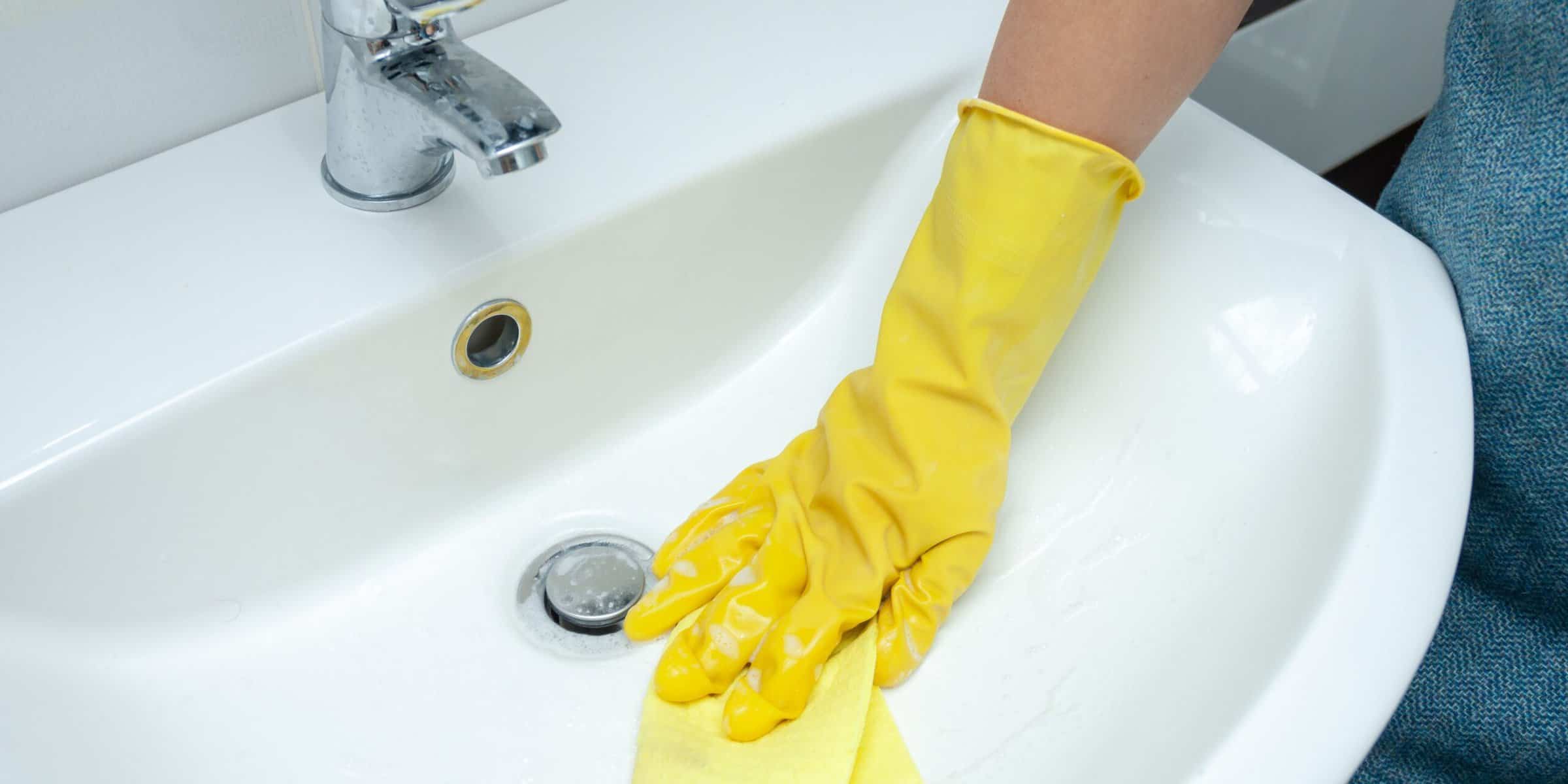
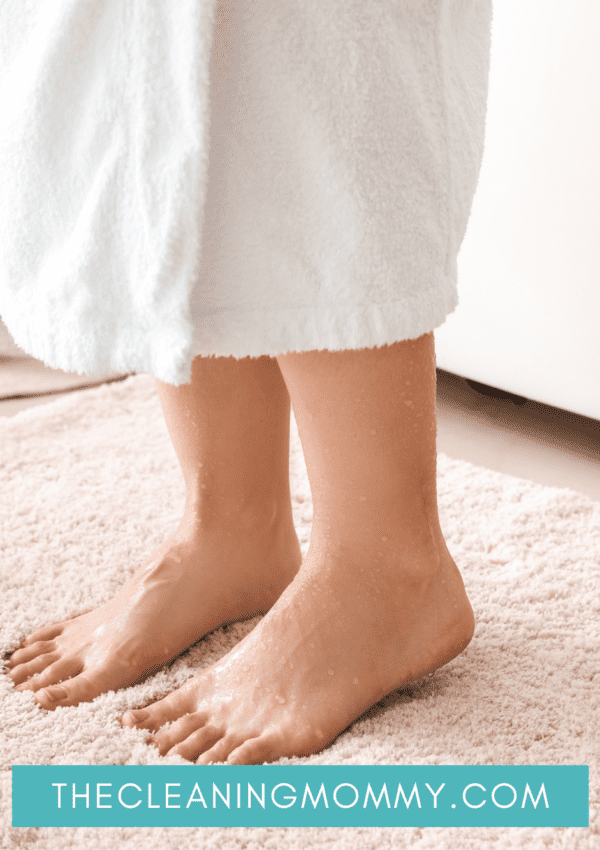
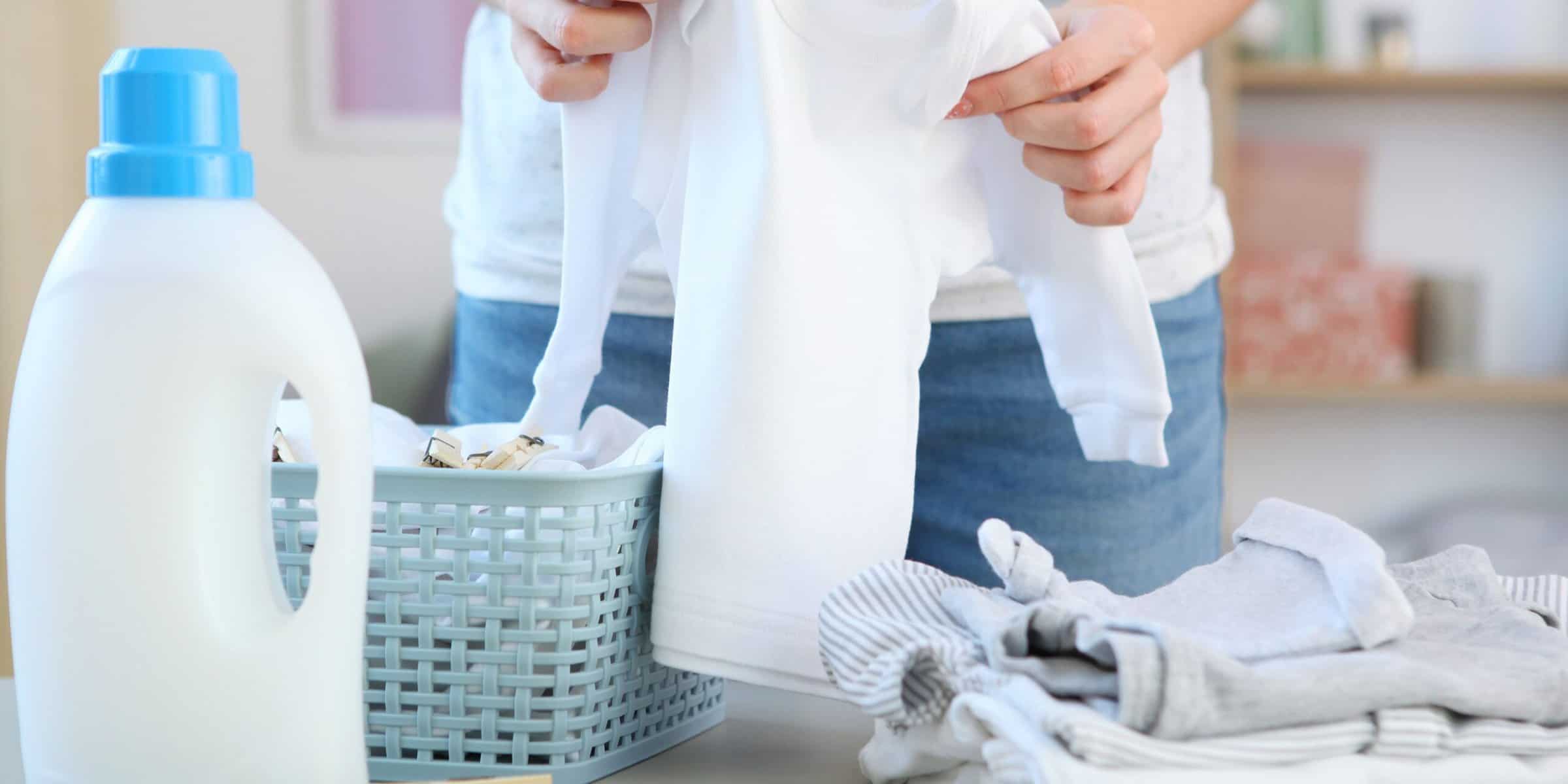
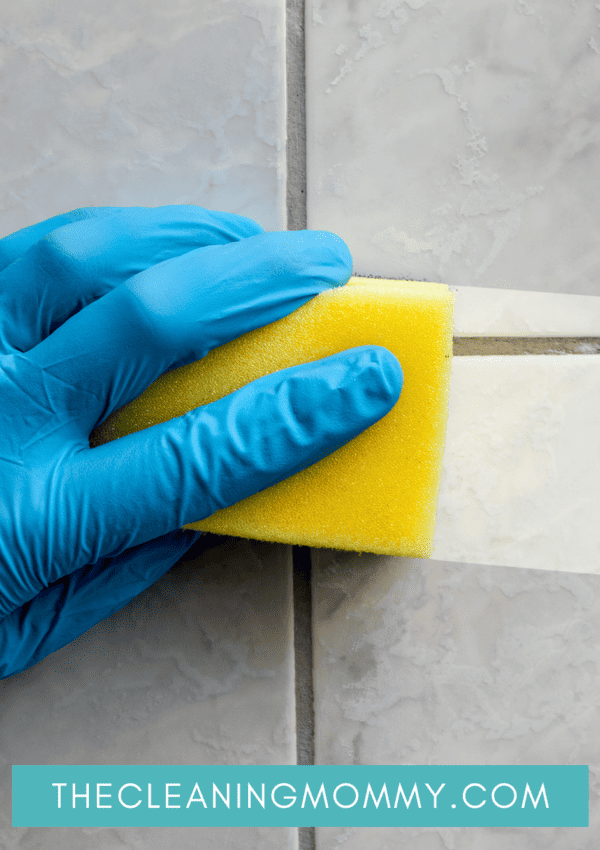
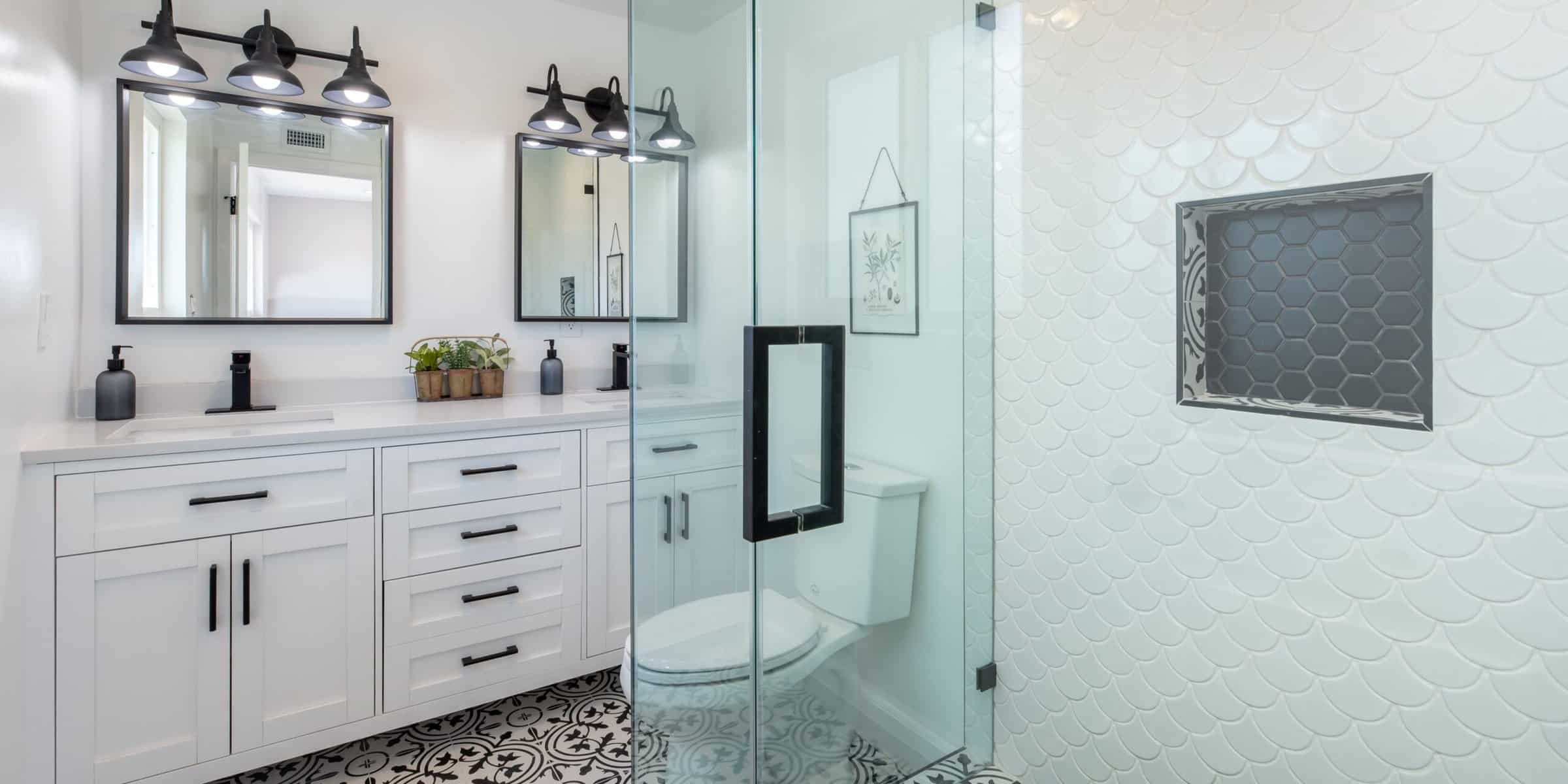
Leave a Reply